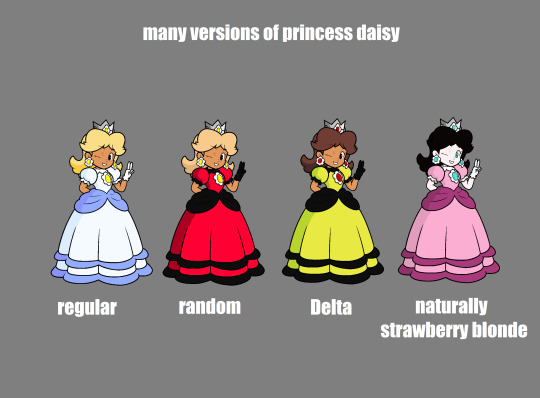#Difference Between
Explore tagged Tumblr posts
Text
Seal , Sea Lion
Pinnipedia , Otariinae


Finna talk abt the difference between seals and sea lions cuz a lot of y'all be pissing me off when you don't know the difference
Body- Seals will look a lot fluffier, shorter, and more robust because they live in the Arctic where they need the extra layers of protection. Sea lions look a lot more sleek, skinnier, and longer because they live closer to the equator than Seals.
Fins- Seal fins are shorter and stubbier while sea lion fins are longer and are better able to support the animal in walking and propping itself up (their tail is also able to move more than a seals)
Ears- Seals do not have outward ears, just the holes. Sea lions have little ear flaps.
Noise- Seals are very quiet compared to sea lions who will bark.
pls stop calling sea lions seals
#inkhasautism#fun facts#marine life#ocean#ocean life#sealife#seals#sea lions#pinnipeds#seal#sea lion#difference between#ihateallofyallgoofyassmfs#<3#Pinnipedia#Otariinae
11 notes
·
View notes
Text
Recently, I have been reading a lot of Kevin Lordi's analysis guide of each episode of Ed, Edd n Eddy, and I must say it has been enlightening.
Some of you may be familiar with the character Kevin voiced by actress Kathleen Barr.
It might come as a surprise to some that I am originally from Norway. Interestingly, in the Norwegian dubbed version, Kevin's name was not used in show. This could be due to either his name being unpopular or was uncommon among Norwegian viewers. Instead they opted for the most common Norwegian name at the time "Kjetil," which means "kettle," "cauldron," or "helmet" in Norwegian.
I am both amused by the fact that my name coincides with a character's in a way that bears my own name. Jep that’s right my name is also Kjetil.

#Kevin lordi#kevin#ed edd n eddy#eene#ed edd and eddy#ed edd eddy#party at kevin house#book o' scams#ed edd n eddy norway#eene kevin#cartoon network#norwegian#difference between
11 notes
·
View notes
Text

I just saw them on the street
#fanart#traditional art#drawing#sketchbook#sketch#muslim#sapphic#beauttiful girls#women#girl friends#difference between
2 notes
·
View notes
Text
Researchers study differences in attitudes toward Covid-19 vaccines between women and men in Africa
New Post has been published on https://thedigitalinsider.com/researchers-study-differences-in-attitudes-toward-covid-19-vaccines-between-women-and-men-in-africa/
Researchers study differences in attitudes toward Covid-19 vaccines between women and men in Africa


While many studies over the past several years have examined people’s access to and attitudes toward Covid-19 vaccines, few studies in sub-Saharan Africa have looked at whether there were differences in vaccination rates and intention between men and women. In a new study appearing in the journal Frontiers in Global Women’s Health, researchers found that while women and men self-reported similar Covid-19 vaccination rates in 2022, unvaccinated men expressed more intention to get vaccinated than unvaccinated women.
Women tend to have better health-seeking behaviors than men overall. However, most studies relating to Covid-19 vaccination have found that intention has been lower among women. “We wondered whether this would hold true at the uptake level,” says Rawlance Ndejjo, a leader of the new study and an assistant lecturer in the Department of Disease Control and Environmental Health at Makerere University.
The comparable vaccination rates between men and women in the study is “a good thing to see,” adds Lula Chen, research director at MIT Governance Lab (GOV/LAB) and a co-author of the new study. “There wasn’t anything gendered about how [the vaccine] was being advertised or who was actually getting access to it.”
Women’s lower intention to vaccinate seemed to be driven by concerns about vaccine safety, suggesting that providing factual information about vaccine safety from trusted sources, like the Ministry of Health, could increase uptake.
The work is a collaboration between scholars from the MIT GOV/LAB, Makerere University’s School of Public Health in Uganda, University of Kinshasa’s School of Public Health in the Democratic Republic of the Congo (DRC), University of Ibadan’s College of Medicine in Nigeria, and Cheikh Anta Diop University in Senegal.
Studying vaccine availability and uptake in sub-Saharan Africa
The authors’ collaboration began in 2021 with research into Covid-19 vaccination rates, people’s willingness to get vaccinated, and how people’s trust in different authorities shaped attitudes toward vaccines in Uganda, the DRC, Senegal, and Nigeria. A survey in Uganda found that people who received information about Covid-19 from health workers were more likely to be vaccinated, stressing the important role people who work in the health-care system can play in vaccination efforts.
Work from other scientists has found that women were less likely to accept Covid-19 vaccines than men, and that in low- and middle-income countries, women also may be less likely to get vaccinated against Covid-19 and less likely to intend to get vaccinated, possibly due to factors including lower levels of education, work obligations, and domestic care obligations.
Previous studies in sub-Saharan Africa that focused on differences between men and women with intention and willingness to vaccinate were inconclusive, Ndejjo says. “You would hardly find actual studies on uptake of the vaccines,” he adds. For the new paper, the researchers aimed to dig into uptake.
People who trust the government and health officials were more likely to get vaccinated
The researchers relied on phone survey data collected from adults in the four countries between March and July 2022. The surveys asked people about whether they’d been vaccinated and whether those who were unvaccinated intended to get vaccinated, as well as their attitudes toward Covid-19, their trust in different authorities, demographic information, and more.
Overall, 48.5 percent of men said they had been vaccinated, compared to 47.9 percent of women. Trust in authorities seemed to play a role in people’s decision to vaccinate — receiving information from health workers about Covid-19 and higher trust in the Ministry of Health were both correlated with getting vaccinated for men, whereas higher trust in the government was correlated with vaccine uptake in women.
Lower interest in vaccines among women seemed related to safety concerns
A smaller percentage of unvaccinated women (54 percent) said they intended to get vaccinated, compared to 63.4 percent of men. More unvaccinated women said they had concerns about the vaccine’s safety than unvaccinated men, which could be driving their lower intention.
The researchers also found that unvaccinated women and men over 40 had similar levels of intention to get vaccinated — lower intention in women under 40 may have driven the difference between men and women. Younger women could have concerns about vaccines related to pregnancy, Chen says. If this is the case, the research suggests that officials need to provide additional reassurance to pregnant people about vaccine safety, she adds.
Trust in authorities also contributed to people’s intention to vaccinate. Trust in the Ministry of Health was tied to higher intention to vaccinate for both men and women. Men with more trust in the World Health Organization were also more likely to intend to vaccinate.
“There’s a need to deal with a lot of the myths and misconceptions that exist,” Ndejjo says, as well as ensure that people’s concerns related to vaccine safety and effectiveness are addressed. Officials need “to work with trusted sources of information to bridge some of the gaps that we observe,” he adds. People need to be supported in their decision-making so they can make the best decisions for their health.
“This research highlights linkages between citizen trust in government, their willingness to get vaccines, and, importantly, the differences between men and women on this issue — differences that policymakers will need to understand in order to design more targeted, gender-specific public health interventions,” says study co-author Lily L. Tsai, who is MIT GOV/LAB’s director and founder and the Ford Professor of Political Science at MIT.
This project was funded by the Bill & Melinda Gates Foundation.
#2022#Africa#amp#author#bridge#Collaboration#college#covid#covid 19#data#deal#democratic#Design#Difference Between#Disease#driving#education#Environmental#Ford#Foundation#Gender#Global#governance#Government#Health#Health sciences and technology#how#it#LESS#Medicine
2 notes
·
View notes
Text
Pagan. Witch. Wiccan...whats the difference?
[I can't make heads or tales with this, so take this as you will I did the best I could to make it simple for myself to understand]
“What IS the difference?”
“Wicca is a tradition of Witchcraft that was brought to the public by Gerald Gardner, in the 1950’s. [Source]
There is a great deal of debate among the pagan community about whether or not Wicca is truly the same form of witchcraft that the ancients practised. Regardless, many people use the term Wicca and Witchcraft interchangeably.
Paganism is an umbrella term used to apply to a number of different earth-based faiths.
Wicca falls under that heading, although not all Pagans are Wiccan.
So in a nutshell, All Wiccans are Witches but not all Witches are Wiccans. All Wiccans are pagans but not all Pagans are witches.
Some Witches are pagans but some are not. Some Pagans use the practice of witchcraft while others choose not to.”
__________________________________________________________
Pagan: Is an umbrella term, it is derived from Pagnus, it mostly consists of old traditions before christianity spread, it described people who lived in rural areas and those same country folk were often the last holdouts clinging to their old religions. It passed down by word of mouth and was never a written text. Which is why most religions had been lost to time. Pagan was coined to mean the people who didn’t worship the god of Abraham.
[Paganism, in my opinion, would mean the olde traditions of Witchcraft. Not all Pagans are Witches or Wiccans as its both a subset of this religion like a tree branch; it does cross correlate and bleed into the other subgroups occasionally.]
Wiccan: Wiccan was coined when Gerald Gardner came across a Witches coven and began to site and record all of his findings, and published his book in the 1950's, [Personally I thought Margarat Murray, was the founder but alas...[
He had based Wicca on findings from the old Pagan traditions; however other pagans and witches were happy to practise their own spiritual path without converting to wicca.
Therefore “PAGAN.” Is an umbrella term that includes many different spiritual belief systems- Wicca is just one of many.
Christian > Lutheran or Methodist or Jehovah's Witness. Pagan > Wiccan or Asatru or Dianic or Eclectic Witch.
People who practise witchcraft aren’t always wiccans and Pagans and hold their craft separate from the two groups. And most witches use their own religions to include in their craft. There are witches who embrace the Christian god alongside the Wiccan Goddess- Alongside Judaism, and Atheist witches who practise magic but do not follow a deity.
____________________________________________________________
Wicca.
Wicca is a religion of empowerment, it is taking control of your life and your future. Wicca is living in tune with Nature and about creating a balance between all things, light and dark, black and white, masculine and feminine.
Wiccans believe in a god and goddess.
The goddess gave birth to the universe including the god who is her consort, so the goddess is all things. We believe that everything is connected through the goddess, we are the universe and the universe is inside us.
Everything is connected.
We are all connected to each other biologically, to the earth chemically and to the rest of the universe of the same stuff the stars are made of. All of Nature is connected by a universal force, Wiccans call this magic [ Crowley, changed magic to Magick to differentiate the magic around us and separate it from Magician parlour tricks/ trick mirrors and smoke/glass]
*When we do Spells, chants or incantations we connect to this force, Wicca is a peaceful religion. There is NO satan or Devil in Wicca. That would be Satanists.
"The devil is a ‘Christian’ concept and has nothing to do with Wicca, we do not have any demons, Wiccans believe in a law that decrees ‘Harm none’ We believe in Karma, that any bad we give out will come back to us three-fold."
#witch#witchtok#witchblr#witchcraft#witch community#wiccan#pagan#wicca#Babywitch#Witch#Wicca#Pagan#Paganism#Difference between#What is the difference between Pagan#Wiccan
6 notes
·
View notes
Photo

which color pf princess daisy is even so much more ?
#princess daisy#recolored#palette swap#difference between#Brunette Woman#turquoise eyed woman#gorgeous womens
3 notes
·
View notes
Text
This IS actually useless information...and also funny as fuck... 😆
guy who is fun-ruiningly pedantic about the differences between a labyrinth and a maze
39K notes
·
View notes
Text


Mean Girls (2004) House MD (2009)
#corporate wants you to find the difference between these two pictures#theyre the same picture#house md#gregory house#mean girls#transition
98K notes
·
View notes
Text
My First Impression after back to America: "The Prices Are Too High!"
The first thing I thought when I came back to America was, "The prices are insanely high!"
Here’s a comparison of egg prices at different supermarkets:
Whole Foods: 12 eggs – $8.90 (approx. ¥1,335)
Trader Joe’s: 12 eggs – $3.50 (approx. ¥525)
Jewel-Osco: 12 eggs – $5.60 (approx. ¥840)
In Japan, a pack of 10 eggs typically costs around $2.00 (approx. ¥300). Not only that, but in Japan, you can eat raw eggs without worrying about salmonella, thanks to strict safety measures. They’re fresh and delicious. I realize now how lucky we were in Japan...
After a Month: My shopping strategies and new Discoveries
After a month of grocery shopping, I started to get a better sense of the stores—their atmosphere, product selection, prices, and freshness. I also downloaded apps for my favorite supermarkets, and they turned out to be quite eye-opening!
<New Discoveries>
"Sale Items" Are Typically 30–60% Off I almost never pay full price anymore!
AI-Powered Personalized Shopping -Based on my purchase history, the apps send recommendations, recipes, and personalized coupons. -I find myself buying more repeat items and products that match my food preferences. -AI is widely used in everyday services in the U.S., which is both fascinating and convenient!
Brands in the U.S. and Mexico Often Offer Deals Around Major Events -Many sales are tied to sports events or holidays.
Eating well is important, and meals are a big part of our family’s daily enjoyment. So, I’ll keep finding ways to shop smarter!
0 notes
Text
Katniss is such an unreliable narrator. She says "Then something unexpected happens. At least, I don't expect it because I don't think of District 12 as a place that cares about me" girl you deliver strawberries to the Mayor, you hunt and trade for the district, when you fell at Prim being chosen someone caught you, when you went to Prim people parted for you, when you volunteered EVERYONE stopped. Idk how to tell you but I think you're a pillar of the community.
#katniss everdeen#the hunger games trilogy#the hunger games#primrose everdeen#hunger games#batcavescolony reads the hunger games#suzanne collins#'now it seems i have become someone precious' NOW? GIRL BFFR you're their hunter girl#and this isn't negative just bffr girl#your WHOLE DISTRICT did the three finger salute that you yourself says means admiration thanks and goodbye to someone you love and on top is#old a rarely used. your WHOLE DISTRICT decided in that moment that they needed to bring back this sign of respect for YOU#...................................................................#idk why some people are thinking i mean this as negative i don't she is unreliable but its not intentional. like when Peeta heart stoped in#CF she doesn't know what Finnick is doing at first cus she doesn't know off the top of her head what cpr is. she also thinks Peeta after the#reaping is acting for the cameras. he isnt we dind out later his mom basically told him Katniss was gonna win and he would die. obviously#shes not doing it on purpose shes just for lack of better words uneducated? as in she doesn't know everything shes not omnipotent#so when Plutarch (? second games guy) shows her his mokingjay hiden watch shes like *wtf that's weird?* then the people traveling to#district 13 show her the mockingjay cookie and explains it and she then goes on the difference between his watch and their cookie#and why does eveyone act as if district 12 is as bad as the capital? they CANT help Katniss and Prim in the way you want. they cant give#them food. none of them have any! and im not putting iton Katniss but they hid they needed food so they could stay together. it sounds like#some of you are in this our world mentally of what people do after a loved one dies (brings food constantly checks on them etc) district 12#cant do that. they dont have food and they're all suffering. you cant give someone food when you have none to give. then theirs the fact#that peeta DID help. Peeta buring the bread and tossing some to her then taking a beating from his mom is a HUGE thing in the books.#he used his resources to help her like you all said someone should.#district 12 DID (rip) care about Katniss before the hunger games. why do you think she was allowed to hunt? or how her trades were good#these are the little ways 12 can shows Katniss they love her. but again Katniss doesn't see this and YES its because she had ptsd before the#hunger games as well. i swear some of you make it seem like d12 was all living a life of luxury and glaring down at Katniss.#other things that show Katniss is in hight standing with at least her people of d12 is her dad was known enough through d12 for peeta dad to#comment on his singing along with his commenting on her mom. also her mom is a healer in the community. yeah her parents arnt the top but#of d12 but they are/were definitely high staning in the Seam.
44K notes
·
View notes
Text
the curse of adhd:
i will remember with absolute clarity, when the thought strikes me that i have a text to send someone, that this is the fourth time in three days i've attempted to send this specific text
i will forget, in the time it takes me to pick up my phone, that i picked it up intending to send a text
#every time#managed to actually send it today!#but also i have been reminded to post this by the fact that i just had a task to do in two different rooms just now#so i turned the light on in the room i was getting to second because my brain would go 'oh why is the light on that's weird'#and check the room and it would remind me to do the second task#in the less than five seconds between turning the light on and exiting the room#my brain went 'oh the light's on better turn that off before i leave'#and i had to manually catch myself#PLS.#adhd
49K notes
·
View notes
Text
Self-Authenticating Images Through Simple JPEG Compression
New Post has been published on https://thedigitalinsider.com/self-authenticating-images-through-simple-jpeg-compression/
Self-Authenticating Images Through Simple JPEG Compression
Concerns about the risks posed by tampered images have been showing up regularly in the research over the past couple of years, particularly in light of a new surge of AI-based image-editing frameworks capable of amending existing images, rather than creating them outright.
Most of the proposed detection systems addressing this kind of content fall into one of two camps: the first is watermarking – a fallback approach built into the image veracity framework now being promoted by the Coalition for Content Provenance and Authenticity (C2PA).
The C2PA watermarking procedure is a fallback, should the image content become separated from its original and ongoing provenance ‘manifest’. Source: https://www.imatag.com/blog/enhancing-content-integrity-c2pa-invisible-watermarking
These ‘secret signals’ must subsequently be robust to the automatic re-encoding/optimization procedures that often occur as an image transits through social networks and across portals and platforms – but they are often not resilient to the kind of lossy re-encoding applied through JPEG compression (and despite competition from pretenders such as webp, the JPEG format is still used for an estimated 74.5% of all website images).
The second approach is to make images tamper-evident, as initially proposed in the 2013 paper Image Integrity Authentication Scheme Based On Fixed Point Theory. Instead of relying on watermarks or digital signatures, this method used a mathematical transformation called Gaussian Convolution and Deconvolution (GCD) to push images toward a stable state that would break if altered.
From the paper ‘Image Integrity Authentication Scheme Based On Fixed Point Theory’: tampering localization results using a fixed point image with a Peak Signal-to-Noise (PSNR) of 59.7802 dB. White rectangles indicate the regions subjected to attacks. Panel A (left) displays the applied modifications, including localized noise, filtering, and copy-based attacks. Panel B (right) shows the corresponding detection output, highlighting the tampered areas identified by the authentication process. Source: https://arxiv.org/pdf/1308.0679
The concept is perhaps most easily understood in the context of repairing a delicate lace cloth: no matter how fine the craft employed in patching the filigree, the repaired section will inevitably be discernible.
This kind of transformation, when applied repeatedly to a grayscale image, gradually pushes it toward a state where applying the transformation again produces no further change.
This stable version of the image is called a fixed point. Fixed points are rare and highly sensitive to changes – any small modification to a fixed point image will almost certainly break its fixed status, making it easy to detect tampering.
As usual with such approaches, the artefacts from JPEG compression can threaten the integrity of the scheme:
On the left, we see a watermark applied to the face of the iconic ‘Lenna’ (Lena) image, which is clear under normal compression. On the right, with 90% JPEG compression, we can see that the distinction between the perceived watermark and the growth of JPEG noise is lowering. After multiple resaves, or at the highest compression settings, the majority of watermarking schemes face issues with JPEG compression artefacts. Source: https://arxiv.org/pdf/2106.14150
What if, instead, JPEG compression artefacts could actually be used as the central means of obtaining a fixed point? In such a case, there would be no need for extra bolt-on systems, since the same mechanism that usually causes trouble for watermarking and tamper detection would instead form the basis of tamper detection framework itself.
JPEG Compression as a Security Baseline
Such a system is put forward in a new paper from two researchers at the University of Buffalo at the State University of New York. Titled Tamper-Evident Image Using JPEG Fixed Points, the new offering builds on the 2013 work, and related works, by officially formulating its central principles, for the first time, as well as by ingeniously leveraging JPEG compression itself as a method to potentially produce a ‘self-authenticating’ image.
The authors expand:
‘The study reveals that an image becomes unchanged after undergoing several rounds of the same JPEG compression and decompression process.
‘In other words, if a single cycle of JPEG compression and decompression is considered a transformation of the image, referred to as a JPEG transform, then this transform exhibits the property of having fixed points, i.e., images that remain unaltered when the JPEG transform is applied.’
From the new paper, an illustration of JPEG fixed point convergence. In the top row we see an example image undergoing repeated JPEG compression, with each iteration showing the number and location of changing pixels; in the bottom row, the pixel-wise L2 distance between consecutive iterations is plotted across different compression quality settings. Ironically, no better resolution of this image is available. Source: https://arxiv.org/pdf/2504.17594
Rather than introducing external transformations or watermarks, the new paper defines the JPEG process itself as a dynamic system. In this model, each compression and decompression cycle moves the image toward a fixed point. The authors prove that, after a finite number of iterations, any image either reaches or approximates a state where further compression will produce no change.
The researchers state*:
‘Any alterations to the image will cause deviations from the JPEG fixed points, which can be detected as changes in the JPEG blocks after a single round of JPEG compression and decompression…
‘The proposed tamper-evident images based on JPEG fixed points have two advantages. Firstly, tamper-evident images eliminate the need for external storage of verifiable features, as required by image fingerprinting [schemes], or the embedding of hidden traces, as in image watermarking methods. The image itself serves as its proof of authenticity, making the scheme inherently self-evident.
‘Secondly, since JPEG is a widely-used format and often the final step in the image processing pipeline, the proposed method is resilient to JPEG operations. This contrasts with the original [approach] that may lose integrity traces due to JPEG.’
The paper’s key insight is that JPEG convergence is not just a byproduct of its design but a mathematically inevitable outcome of its operations. The discrete cosine transform, quantization, rounding, and truncation together form a transformation that (under the right conditions) leads to a predictable set of fixed points.
Schema for the JPEG compression/decompression process formulated for the new work.
Unlike watermarking, this method requires no embedded signal. The only reference is the image’s own consistency under further compression. If recompression produces no change, the image is presumed authentic. If it does, tampering is indicated by the deviation.
Tests
The authors validated this behavior using one million randomly generated eight-by-eight patches of eight-bit grayscale image data. By applying repeated JPEG compression and decompression to these synthetic patches, they observed that convergence to a fixed point occurs within a finite number of steps. This process was monitored by measuring the pixel-wise L2 distance between consecutive iterations, with the differences diminishing until the patches stabilized.
L2 difference between consecutive iterations for one million 8×8 patches, measured under varying JPEG compression qualities. Each process begins with a single JPEG-compressed patch and tracks the reduction in difference across repeated compressions.
To evaluate tampering detection, the authors constructed tamper-evident JPEG images and applied four types of attacks: salt and pepper noise; copy-move operations; splicing from external sources; and double JPEG compression using a different quantization table.
Example of fixed point RGB images with detection and localization of tampering, including the four disruption methods used by the authors. In the bottom row, we can see that each perturbation style betrays itself, relative to the generated fixed-point image.
After tampering, the images were re-compressed using the original quantization matrix. Deviations from the fixed point were detected by identifying image blocks that exhibited non-zero differences after recompression, enabling both detection and localization of tampered regions.
Since the method is based entirely on standard JPEG operations, fixed point images work just fine with regular JPEG viewers and editors; but the authors note that if the image is recompressed at a different quality level, it can lose its fixed point status, which could break the authentication, and needs to be handled carefully in real-world use.
While this isn’t just a tool for analyzing JPEG output, it also doesn’t add much complexity. In principle, it could be slotted into existing workflows with minimal cost or disruption.
The paper acknowledges that a sophisticated adversary might attempt to craft adversarial changes that preserve fixed point status; but the researchers contend that such efforts would likely introduce visible artifacts, undermining the attack.
While the authors do not claim that fixed point JPEGs could replace broader provenance systems such as C2PA, they suggest that fixed point methods could complement external metadata frameworks by offering an additional layer of tamper evidence that persists even when metadata is stripped or lost.
Conclusion
The JPEG fixed point approach offers a simple and self-contained alternative to conventional authentication systems, requiring no embedded metadata, watermarks, or external reference files, and instead deriving authenticity directly from the predictable behavior of the compression process.
In this way, the method reclaims JPEG compression – a frequent source of data degradation – as a mechanism for integrity verification. In this regard, the new paper is one of the most innovative and inventive approaches to the problem that I have come across over the past several years.
The new work points to a shift away from layered add-ons for security, and toward approaches that draw on the built-in characteristics of the media itself. As tampering methods grow more sophisticated, techniques that test the image’s own internal structure may start to matter more.
Further, many alternative systems proposed to address this problem introduce significant friction by requiring changes to long-established image-processing workflows – some of which have been operating reliably for years, or even decades, and which would demand a far stronger justification for retooling.
* My conversion of the authors’ inline citations to hyperlinks.
First published Friday, April 25, 2025
#2025#ADD#ai#AI image#AI Image Editing#Anderson's Angle#anomaly detection#approach#Artificial Intelligence#authentication#Behavior#Blog#c2pa#change#competition#complexity#compression#content#craft#data#Design#detection#Difference Between#displays#disruption#double#easy#Editing#employed#Exhibits
0 notes
Text

The best example of persona narrative is John Milton's Paradise Lost, which features a visionary first-person narrator.
Persona vs tone
Persona : persona is applied to the first person speaker who tells the story in a narrative poem or novel, or whose voice we hear in a lyric poem.
Eg: John Milton's Paradise Lost is a prime example of a visionary first-person persona narrative.
Tone: Tone is the expression of a literary speaker’s attitude to his listener. It reflects speakers sense or how he stands toward those being addressed.
The tone of a speech can be described as disapproving or approving, formal or casual, direct or reserved, serious or playful, proud or humble, angry or caring, sincere or sarcastic, superior or overly flattering, and so on……
#dramatis personae#paradise lost#english literature#difference between#personavstone#speaker#artistic expression#literary analysis#narrative#understanding#literary terms#poeticpersonae#personaandtone#visionarynarrators
1 note
·
View note
Text



#how hard it mustve been for silco to work in mines#with his tender hands#and... i mean... he is just tiny!!!#btw the size difference between him and vander...#albinogel art#arcane#silco#vander#zaundads#vanco
14K notes
·
View notes
Text

This is what the dynamic was like
#my art#sketchy sketch#arcane#silco#vander#silco arcane#vander arcane#zaundads#vanco#sadihasdias I can't stop#i am not that into turning this duo into a trio#and downplaying some of the themes and dynamics established earlier on#the political and freedomfighter stuff. Now it's a promise to a keep etc not a fight between two different views on how to handle#a difficult thing as breaking away from oppression and becoming independent and free#and not in individual level but as a whole community/city#and neither of them did it 100% right but both did some things right#anyway haha lol gay
21K notes
·
View notes
Text

I like to think the FNAF Chicas are friends,,
#myart#chloesimagination#comic#fnaf#five nights at freddy's#fnaf fanart#fnaf movie#fnaf 2#fnaf 2 movie#fnaf chica#withered chica#toy chica#toy bonnie#I love the idea that toy chica isn’t put off by withered chica at all#a true girls girl moment#just is happy to meet another chica model#it’s funny the drastic difference between these two#withered chica might genuinely be one of thr scariest animatronics#in all of FNAF history just from how uncanny they are#love her to bits#I love you chicas
4K notes
·
View notes